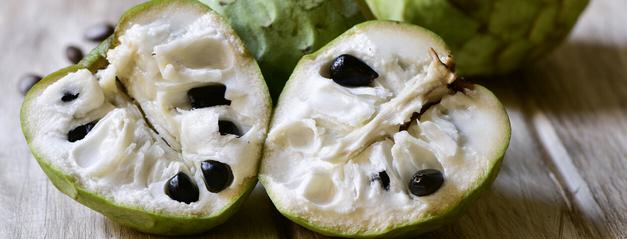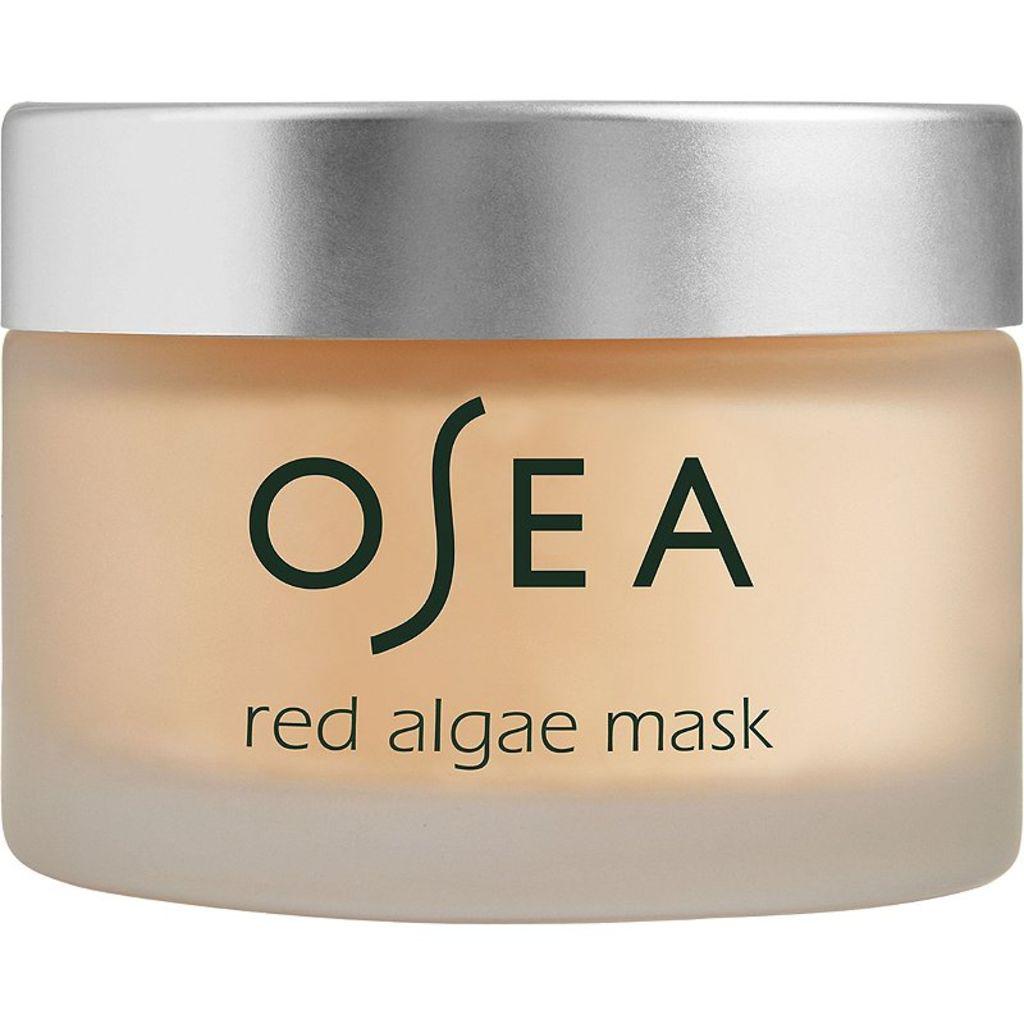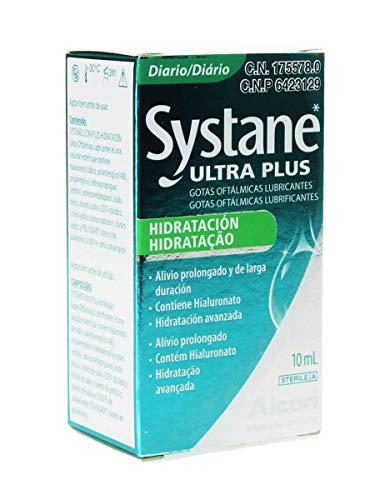Chirimoya, the ugly but delicious tropical fruit of long tradition in Spain: what are its properties and how to cook it
In front of the seductive bearing of the mango or papaya, and without reaching the striking image of the colorful pitahaya, the chirimoya is the ugly of tropical fruits, but that hides a creamy, sweet and tasty pulp.Although their exotic companions are today taking all eyes, this peculiar fruit has been cultivating for more than two centuries in the warmer areas of Spain, even with a denomination of protected origin in Andalusia.
It has been in our territory for many decades, but it was not until the 1990s when it really expanded and really widespread throughout the country, as it rarely left the markets of the south and the islands to fascinate the colder land consumers when they were barely receivedexotic products outside local production.
At present, there are those who consider it a somewhat old fruit, remembering the passion that aroused in our parents and grandparents as almost luxury whim, but recent promotional campaigns and the interest generated by the tropical sector is reviving its consumption.
What is custard apple, characteristics and varieties
Also called Cherimoya and with the curious nickname of Pudding Apple in English ("creamy apple" or "custard), the custardspecies, usually distributed in tropical climates around the world.Under the genus Annona we find more than a hundred tropical fruit trees with several hybrids specially selected for the production and human consumption of their fruits.The popular Guanabana belongs to this same family.
Trees usually reach a height between five and eight meters maximum, with a smooth, cylindrical, thick bark and branched bark.Frondoso and with fine and oval leaves, the hermaphrodite flowers are not very striking, with yellowish or whitish petals and sometimes purple tones.
The custard.This gives chirimoya a characteristic aspect that he shares with other anonnas, with an exter.
Variable medium size, with a weight that is usually between 200 and 800 g in the entire fruit, the custard.That skin does not usually eat but it is not very thick, which together with the softness of the mature pulp make it a delicate fruit and that requires very care in its manipulation.That is why it is usually distributed still slightly green.
The interior of the chirimoya offers a white or ivory pulp, more yellowish in the area near the skin when it is very mature.When maturing, it presents a very creamy, tender and sweet, sweet and aromatic inner meat, full of seeds of remarkable black or dark bull size, annoying to eat but that can be easily removed, with a shape remembered to the pipessunflower.
There are more than fifty varieties but only eight are grown for human consumption, highlighting Jete's fine,.In addition to the greens there are gray and red custarvers, although they are still unusual, and are commercially classified according to the outer surface of the skin (smooth, printed, umbonata, mamilata and tuberculata).
Office of International Affairs Universitas Negeri Jakarta Proudly present, How to prepare Standout Research of ... https: // t.CO/VMANIGLUXR
— UNIV. NEGERI JAKARTA Tue Sep 01 00:19:40 +0000 2020
Current Origin, Cultivation and Production

The origins of the chirimoya are located in South America, probably in the Andean areas of Peru, Chile, Colombia or mountainous areas of Ecuador, regions where the tree still grows spontaneously, especially in the Peruvian Andes.The name cherimoya comes from the Quechua Chiri (cold) and very (seeds), referring to germinating on high altitude land.
It is currently a crop widely extended by tropical areas around the world, from southern California to South Africa, Asian areas, Australia and New Zealand.In Europe it is Spain is the main producer, where the first specimens arrived in the 18th century by Andalusian ports.This community is the main producer, with more than 43.000 tons of custards produced in 2009.It is also grown in Alicante, Balearic Islands and Canary Islands, with small more recent plantations in other regions such as Murcia.
In 1995, the creation of the Denomination of Protected Origin of the Costa Tropical-Málaga began to take shape, finally approved by the European Union in 2002.This has allowed increasing the production and dissemination of the fruit throughout the country and also for the international market, whose interest has been increasing in recent years, parallel to the trends of tropical fruits consumption.
The current crop of this fruit maintains very traditional techniques, especially in productions attached to the designation of origin.Being a hermaphrodite, when the flower of custard apple.Each fruit is also collected by hand, using a kind of pole, and is processed from the warehouse for distribution and sale.
Nutritional properties and benefits
Chirimoya still has a certain reputation of being a caloric fruit, but despite not being the least energy, it is a very healthy food full of nutrients with which to enrich any diet, except for very specific specific needs.
With between 80 and 90 kcal per 100 g of edible fruit, the main nutrient of the custard.It practically does not have fat and its protein contribution is also low, with approximately 1 g in the aforementioned proportion.
Chirimoya is a great source of potassium and antioxidant vitamins
Very rich in water, it stands out for its content in micronutrients, vitamins and minerals.It is a great source of potassium, with about 400 mg and antioxidants, especially in vitamin C and folates.It also contains vegetable calcium, phosphorus and magnesium, and vitamin A.
In this way, it is a satiating, moisturizing and energy fruit, whose nutrients can have beneficial effects on the proper functioning of the organism, helping to improve intestinal transit, favoring the formation of collagéno, the absorption of iron and the normal activity of the nervous systemand muscles.It is an ideal fruit for athletes and for weight control diets, always within a varied and balanced diet.
Tips to buy and keep it at home
As a climacteric fruit, chirimoya continues to mature for a few days after being collected, as with other tropical ones such as handle or avocado.Although its skin is thick, the mature copy is very delicate and sensitive to the blows, so it may be more advisable to buy slightly more units than we like to consume them.
It is strange to find chirimoyas for sale that do not.If they are certified with the quality of the DOP, they must wear the seal that accredits them and grants all the guarantees.
To buy good custard apple.Some stores have them with special protections, often facilitated by distributors, seeking to maximize possible transport and manipulation damages.
A custard apple.To the touch it must give slightly, and we will know that it is very mature the softer its texture.As they mature they become more tender, softening the skin and acquiring a blackish brown color that begins with dark lines in the scales.
It is recommended to store custard apple at room temperature, in an aerated and fresh place, far from heat sources or direct sunlight, and separated from fruits that emit ethylene, unless we want to accelerate its maturation.Once we can keep it in the less cold area of the fridge one or two days, if we want to prevent it from passing too much.
How to consume it and use it in the kitchen
The easiest and most common way to consume this fruit is natural, with a spoon or choping it once peeled.Large seeds are somewhat uncomfort.
You can remove the skin pearing it with a sharp peel type knife, as if it were an orange, or throwing first from the peduncle and then cut it into longitudinal half, as if it were an avocado.If it is at its point, the skin will be very easily grown and the pulp will be meloss and soft.
As with the banana, an already very dark chirimoya is also edible, although it can be excessively sweet;In that case we can use it to cook separating the pulp, which can be freezed for a few months.The pulp is quickly blackened by oxidation when exposing it;This can be avoided or reducing spraying it with lemon juice and covering it well, without giving air spaces, or packaging it in a vacuum taper.
We can use it as we would do with the crushed banana, mango pulp or an apple compote, in sweet masses and elaborations such as sauces, stews, vinaigrettes, spoon desserts such as panacotas or mousses, also ice cream, sorbets, smoothies, jams and poles.Crushed is perfect to reduce the amount of sugars added in sweets, and you can integrate desserts such as a cheese or creek cake, or replacing cream or coconut milk in salty recipes.
If the pulp is still firmer, it can be chopped, separating the seeds, to fill and crown cakes, muffins and muffins, empanadas and sweet or macedonias empanadillas.It is delicious served with good natural yogurt, some nuts and other more acidic fruits, such as raspberries or grenade.
Photos |ISTOCK - UNSPLASH - JUMPTORY - JAVIER LASTRAS - FÁTIMA FLORES - WIKIMEDIA COMMONSEN DIRECT TO THE PALADAR |The mango is at its best: what you should know to choose the most juicy and get the most out of the palate |All about the kiwi, the healthy fruit with a bird's name that we enjoy with Asturian accent today

![47 best antiage nutritive cream in 2022 [based on 326 reviews]](https://website-google-hk.oss-cn-hongkong.aliyuncs.com/drawing/article_results_6/2022/2/27/1918fc37c66ad30564173e69d9df88a0.jpeg)








